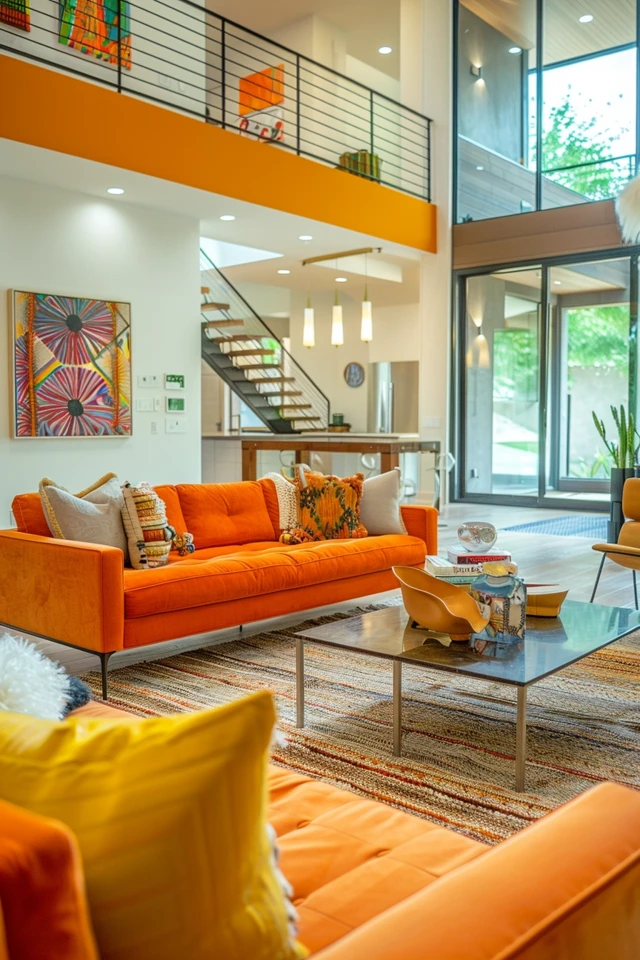When it comes to painting an open floor plan, creating a cohesive and balanced look throughout the space is key. As a homeowner, you want each area to flow seamlessly into the next, while still maintaining its individuality. In this guide, I will share some tips and tricks to help you navigate the process of painting your open floor plan and achieve the desired result.
One of the first things to consider is your color palette. By selecting three colors from the same color family, including a dark shade, a medium shade, and a light shade, you can create depth and visual interest. Using Post-it notes can be a helpful way to visualize how the colors will look on different walls. Consider placing different colors at the corners where two walls meet, as these transition points are ideal for creating a seamless flow.
Another important aspect to keep in mind is the use of accent colors. The accent color can not only be used on the walls but also on backsplashes, the backs of open cabinets, and even on furniture. By using the same paint sheen on all the walls, you can achieve a cohesive and polished look throughout the entire space.
When determining where to place each color, it’s essential to consider the room from all angles. Think about how the colors will interact and create depth and interest. For long walls without a break, consider adding molding above a window or doorway to visually separate the space. Spreading the paint colors throughout the area will help create balance and harmony.
Additionally, it’s important to give special attention to the ceiling, trim, and woodwork. Painting the ceiling a neutral color and keeping the trim and woodwork white will accentuate the paint colors on the walls and tie the entire open floor plan together.

Key Takeaways:
- Choose three colors from the same color family to create depth and visual interest in your open floor plan.
- Use Post-it notes to visualize how different colors will look on different walls, focusing on transition points between walls.
- Consider using accent colors on backsplashes, open cabinets, and furniture to add pops of color throughout the space.
- Keep the paint sheen consistent on all walls for a cohesive look.
- Take into account the room from all angles and use different colors for far walls to create depth and interest.

How to Choose Paint Colors for an Open Concept Home
In an open concept home, creating flow and cohesion among the different areas is crucial when choosing paint colors. One effective approach is to utilize analogous colors, which are colors that sit next to each other on the color wheel. These colors naturally complement each other, resulting in a harmonious and unified look throughout the space.
Another valuable tool to consider is the 60-30-10 decorating rule. This rule recommends allocating 60% of the space to a dominant color, 30% to a secondary color, and 10% to an accent color. By following this rule, you can create a well-balanced and visually appealing color palette.
Adding neutrals to the mix can also help create a calming atmosphere while providing a finishing touch. Neutral colors, such as whites, grays, or beiges, can help balance the vibrant hues and create a sense of cohesion.
When transitioning between different areas in an open concept home, it’s essential to consider softening the color contrast. One effective way to achieve this is by using a portiere or door drape. This technique helps create a visually pleasing divide while maintaining a seamless flow of color throughout the space.
Focal points are another great tool for adding interest and emphasizing specific areas within an open floor plan. For example, a kitchen island or a statement wall can be painted with a contrasting color. This draws the eye and defines the space, adding depth and visual appeal to the overall design.

Conclusion
Painting an open floor plan requires careful consideration of color choices and placement to create a cohesive and balanced look. By following the tips and tricks mentioned in this guide, homeowners can successfully paint their open concept space and enhance the overall design of their home.
One key aspect to keep in mind is choosing a color palette that includes analogous colors. These colors have a natural relationship and when used together, they create a sense of harmony throughout the space. Applying the 60-30-10 decorating rule can also help achieve balance, with one dominant color, a secondary color, and an accent color.
Transitioning between rooms in an open floor plan can be achieved by using portieres or door drapes. These elements soften the color contrast and create a visually pleasing divide, ensuring a smooth flow between different areas. Additionally, incorporating focal points, such as a statement wall or a kitchen island, can help define and highlight specific areas within the open concept space.
Ultimately, the final thoughts on painting open floor plans revolve around considering the overall flow and cohesion of the space. Taking into account the color palette, transitioning between rooms, and incorporating focal points, homeowners can transform their open floor plan into a visually appealing and harmonious environment.

